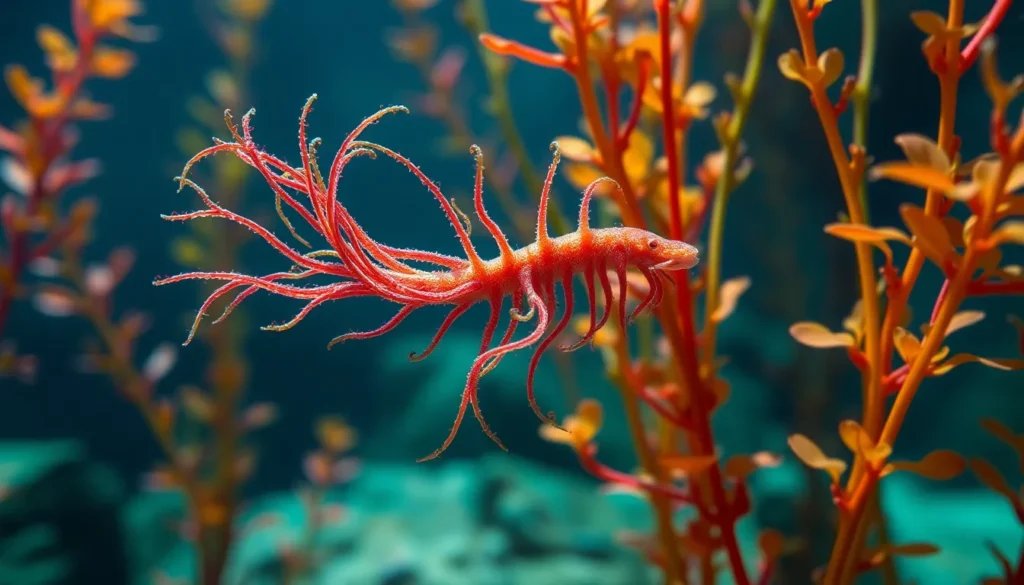Meet the Zeebo Hydra, the ultimate game-changer in the world of aquatic wonders. This isn’t just another fish tale; it’s a marvel of nature that’ll leave even Poseidon scratching his head. With its ability to regenerate and adapt, the Zeebo Hydra proves that when life gets tough, it just gets tougher—like that one friend who always bounces back after a night out.
Table of Contents
ToggleOverview of Zeebo Hydra
Zeebo Hydra represents a fascinating aspect of aquatic life. This small, freshwater creature thrives in various environments, from ponds to streams. Characterized by its elongated body and tentacle-like appendages, the Hydra captures prey using specialized cells called cnidocytes. These cells deliver a sting, immobilizing fish, insects, or other small organisms.
In terms of reproduction, the Zeebo Hydra exhibits both sexual and asexual methods. Asexual reproduction involves budding, where new individuals emerge from the parent organism. This ability allows population growth under ideal conditions. Sexual reproduction, on the other hand, contributes genetic diversity, which enhances survival in changing environments.
Regeneration sets the Zeebo Hydra apart from many other organisms. They can regenerate lost body parts, allowing them to heal from injuries and continue thriving. Recent studies indicate that the Hydra possesses stem cells, which play a vital role in this regeneration process.
Adaptability enhances the Hydra’s resilience in diverse habitats. It can survive in both freshwater and slightly brackish waters. Favoring warmer temperatures, it typically flourishes in waters ranging from 15°C to 28°C.
Ecologically, Zeebo Hydra serves as both predator and prey in aquatic ecosystems. As a predator, it helps control populations of small aquatic organisms. As prey, it supports various fish and other animals higher up in the food chain. This balance highlights the importance of the Hydra in maintaining ecological health.
Understanding the Zeebo Hydra sheds light on evolutionary biology and the potential for regenerative medicine. Continued research will explore its unique capabilities, offering potential insights into healing processes in humans and other species.
Features of Zeebo Hydra

The Zeebo Hydra stands out due to its impressive characteristics. These features reflect its adaptability and efficiency in various environments.
Design and Build Quality
The Zeebo Hydra features an elongated, tubular body that enhances its mobility in water. Tentacle-like appendages radiate from its central body, equipped with specialized cells. Cnidocytes, present on these appendages, deliver a potent sting to immobilize prey. This design allows for efficient hunting of small organisms in freshwater habitats. Resilience is a notable aspect of its build, enabling quick recovery from environmental stressors. It thrives in both calm and turbulent waters, ensuring survival in diverse aquatic landscapes.
Performance Specifications
Performance-wise, the Zeebo Hydra can regenerate lost parts with remarkable speed, thanks to its efficient use of stem cells. It can tolerate a temperature range of 15°C to 28°C, favoring warmer waters for optimal growth. The organism can reproduce rapidly through asexual budding, resulting in population surges under favorable conditions. Its ability to switch to sexual reproduction promotes genetic diversity, essential for long-term survival. This combination of resilience and adaptability establishes the Zeebo Hydra as a key player in its ecosystem.
Benefits of Using Zeebo Hydra
The Zeebo Hydra offers numerous advantages that contribute to its prominence in aquatic ecosystems.
User Experience
Engaging with the Zeebo Hydra enhances the exploration of aquatic life. Users often find their regenerative capabilities fascinating, providing insights into biological processes. Observations reveal its efficient hunting methods, capturing attention with unique hunting techniques. Varied habitats encourage users to study adaptability, leading to a deeper appreciation of biodiversity. Enthusiasts and researchers alike value the Hydra’s role in maintaining ecological balance, as it serves as both predator and prey. Overall, the captivating nature of the Zeebo Hydra encourages continued interest and interaction in aquatic studies.
Cost-Effectiveness
The Zeebo Hydra presents a cost-effective option for research and ecological observation. Maintenance requirements remain low, making it accessible for educational purposes. The relatively simple habitat setup allows for budget-friendly upkeep. Rapid population growth through asexual reproduction generates ample specimens for study without significant investment. Researchers benefit from the Hydra’s robust nature, minimizing expenses related to care and feeding. Investing in this organism fosters essential ecological understanding while keeping costs manageable. Overall, the Zeebo Hydra supports educational initiatives without imposing financial strain.
Comparison with Competitors
The Zeebo Hydra stands out among aquatic organisms due to its unique regenerative abilities. Unlike many competitors, it can heal and regrow lost body parts efficiently, utilizing stem cells for rapid recovery. Other aquatic species may not exhibit such advanced regenerative capabilities, making the Hydra particularly valuable in research settings.
In terms of adaptability, the Zeebo Hydra thrives in a range of water conditions. Many competitors are limited by specific environmental factors or temperature ranges. This organism shows resilience in both calm and turbulent waters, broadening its potential habitat and making it a versatile option for education and observation.
When comparing maintenance requirements, the Zeebo Hydra requires minimal effort. Competing species often require more complex habitat setups or specific care protocols. This simplicity benefits educational institutions or research facilities, allowing them to focus resources on study rather than upkeep.
Cost-effectiveness plays a significant role in favor of the Zeebo Hydra. While other aquatic organisms might incur higher costs for maintenance or habitat configuration, the Hydra’s ease of upkeep ensures budget-friendly educational initiatives. Rapid population growth through asexual reproduction further enhances its appeal, allowing for a sufficient number of specimens without large investments.
Finally, the ecological role of the Zeebo Hydra provides an edge among competitors. It acts as both predator and prey, supporting biodiversity and ecological balance. This dual role is not as prevalent in all aquatic organisms, highlighting the Hydra’s importance in sustaining its ecosystem. The Zeebo Hydra’s distinctive features and advantages over competitors underscore its relevance in both scientific research and ecological education.
The Zeebo Hydra exemplifies the wonders of aquatic life with its unique regenerative abilities and adaptability. This remarkable organism not only captivates researchers and enthusiasts but also plays a vital role in maintaining ecological balance. Its efficient reproduction methods and low maintenance requirements make it an ideal choice for educational and research purposes. As studies continue to explore its potential, the Zeebo Hydra stands as a testament to the intricate connections within ecosystems and the importance of biodiversity. Engaging with this creature opens doors to a deeper understanding of both evolution and regenerative medicine, reinforcing its significance in the scientific community.





